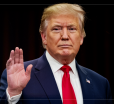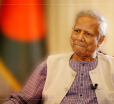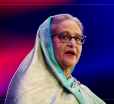What Is India’s Fake News Mastery? How Is It Influencing India’s Relations With Its Neighbors?

Table Of Contents
India’s Rank in the World Freedom Index has dropped to 151 from 140since 2014, when the BJP government acquired the office.
Moreover, this raises questions about the stooping standards of the Indian mainstream media’s reporting. From time to time, the Indian mainstream media has been seen to pull out shenanigans like fake news, yellow journalism, and putting up a communal angle to every type of news. We will try to understand what really goes on behind India’s Fake News Mastery.
Several critiques have been raising questions on the fundamentals of the revenue generation models that the Indian Media works on. Most of the time, a corporate-political nexus can be seen influencing and controlling the news media. This nexus ensures that most of the news remains supportive of the ultra-right-wing agenda and in favor of the current ruling government’s Hindutva politics.
However, this fake India’s Fake News Mastery by mainstream media has not just been limited to India. However, it has been denounced by the rest of the world as well. Especially the neighbors of India have been skeptical about the role played by the Indian mainstream media. Moreover, they do not feel that the Indian media has done much justice while reporting the issues in their Nation.
In this blog post of Big Jar News, we will try to further understand in detail the opinions of public figures and experts working in the field of Media from Nations like India and Nepal. We will try to understand what they have told Al Jazeera during a report.
What Happened To The Indian Journalists In Nepal?
Most Indians know about the recent political turmoil in Nepal. However, what the Indian Media has so far kept from the Indians is the situation that some of the Indian Journalists had to face in Nepal while reporting on the ground. Several pieces of footage and clips have surfaced on the internet over the course of time from the areas of tension.
Whale people expect the media to be adequately represented so that the voice of the protesters can reach out to the people, but the opposite could be seen happening. Several protesters from Nepal not just heckled the Journalists of Indian origin, but they also assaulted them in some cases.
Hence, this shows the dismay and anger among the masses towards the Indian media. This grudge does not just exist in their own country. However, it has extended to the neighboring countries as well. Several Nepalese protesters saw the Indian Television media as the mouthpiece of propaganda from a larger and more powerful neighbor. Thus, they were skeptical of India’s Fake News Mastery by the mainstream media.
1. What Does Smriti Sharma Think About India’s Fake News Mastery And Credibility Crisis?
Smriti Sharma thinks that Television in India has been facing several credibility crises. Moreover, the journalist pointed out that the media have been sensationalizing issues and communalizing several of them while reporting.
Furthermore, Smriti Sharma points out the nature of Indian media, which tends to sound increasingly nationalist and patriotic. However, the Indian media has not been doing what goes as the very fundamental of Journalism. The media in India does not ask relevant questions to those in authority.
2. Why Is Indian Media Specially Frustrating For The Nepalese? Roman Gautam, Editor, Himal SouthAsian
Roman Gautam, the editor of Himal SouthAsian, explains the reasons behind people’s frustration with the Indian Media. Nepalese people, moreover, expect the Indian Media to cover the issues in Nepal while understanding Nepalese culture correctly.
This expectation comes from the deep levels of Track 2 diplomacy between India and Nepal, and also the deep levels of Government-to-Government ties.
However, Gautam thinks the Indian media has reported on Nepal only during times of crisis. Thus, they have kept themselves from nuanced reporting while truly understanding Nepal.
Thus, Gautam thinks it’s tough to make a scene of several things when everything moves so fast.
3. What Propaganda Does The Indian Media Try To Push? What Goes Behind India’s Fake News Mastery
Rohman Gautam specifically discusses an NDTV journalist’s coverage of the situation.
Moreover, the NDTV journalist was interviewing a group of protestors. Thus, the reporter on the ground asked a Protester, “ Since KP Sharma Oli has fled. What kind of Prime Minister do they expect?
However, a very excited protester ends up saying that he expects a leader like Modi to become the Prime Minister of his country. Suddenly, the entire conversation shifted to Prime Minister Modi.
Moreover, the NDTV reporter kept clinging to the topic, trying to fetch the most praise for the Prime Minister of India.
However, Gautam also mentions another Indian channel, Times Now, which somehow found the same Guy and asked him the same question.
Gautam points out the significant amount of pain involved in pointing at the same guy and making him say the same thing. Thus, this shows the levels to which the Indian media has stooped.
Roman Gautam also suggests that the Indian media was trying to put up a false narrative that suggests that the people in Nepal want a Prime Minister like Narendra Modi.
He also finds India’s Fake News Mastery mechanism has been trying to find opportunities to promote the BJP, Hindutva agenda as much as possible.
What Is The Big Jar Take On India’s Fake News Mastery?
India’s Fake News Mastery initially started more subtly. However, as the days passed, several other channels began indulging in the same kind of act. Moreover, this led to a full-fledged rat race among news channels to promote the ruling party’s agenda.
The news channels now blatantly monger communal hate and try to extract as many ratings as possible from that.
Often, these channels use an advertising revenue model, which shapes their operations. The rich and influential class in India seeks to influence policy in their favour. Thus, in return, they ensure that the media narrative remains in favor of the government.
Thus, this political corporate nexus remains the leading reason for the collapse of the fourth pillar of democracy in India.
What Is The Big Jar Take On The Role Of New Media In Countering India’s Fake News Mastery?
However, actual journalism in India has found a place in the new media, which remains mostly outside regulatory oversight. Moreover, the governments find it difficult to control social media.
Thus, social media news reporting goes beyond the clutches of any influence by the corporate-political nexus.
Several stalwarts of indian media who distance themselves from Fake News Mastery now successfully run their own News Portals.
Thus, the list of credible sources of information includes big names like Akash Banerjee’s “Desh Bhakt” and Madhu Trehan’s “News Laundry”.
Other former Television News professionals and stalwarts of the media industry in India have also launched their own news portals. This list includes names such as Abisar Sharma, Ravish Kumar, Karan Thapar, and others.
Various Indian influencers and podcasters also influence public opinion while countering India’s Fake News Mastery.
Some of the fake news-bursting portals, like Alt News, also exist that allow people to rectify most of the fake news.
Thus, people should judge the merit of Indian media through credible sources instead of solely referring to the hooliganism that can be seen in the mainstream media.
Often, people fail to understand the potential of the New Media. However, credible journalism today stands tall, even during hard times, while using the new media.
Frequently Asked Questions (FAQs)
Here are the answers to some of the most commonly asked questions about India’s Fake News Mastery & Indian Media
People can check fake news in India by verifying it on fact-checking websites like Alt News and BOOM. Moreover, people should always cross-check the information received through conventional television media in India.
Fake news can be spotted by checking for sensational headlines, unverified sources, and grammatical errors; furthermore, always confirm with credible news outlets.
India ranks 159th in the World Press Freedom Index. However, these results were published in 2024.
Star Plus is considered one of the richest TV channels in India; therefore, it continues to dominate the entertainment sector with high revenue and viewership.

























